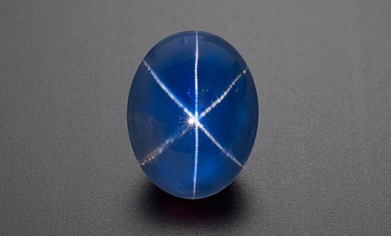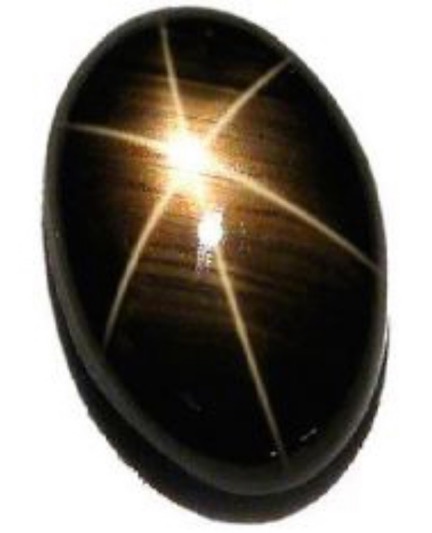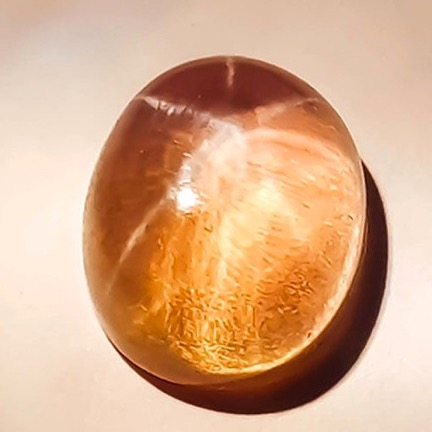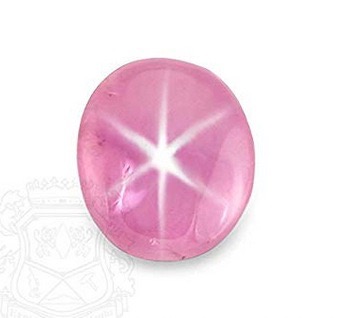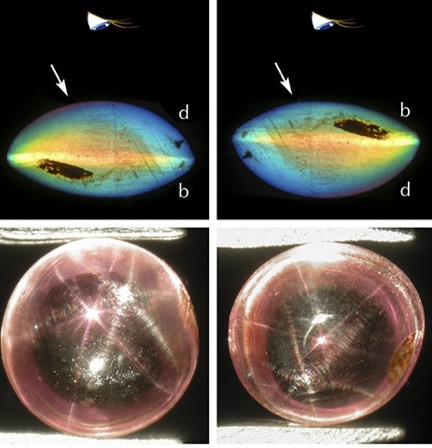The star gemstones of the corundum family are either star sapphires or rubies. Under light these gemstones exhibit asterism [Ref 1] in showing either a six rayed or twelve rayed star. The starred gems present a beautiful and novel appearance and are highly desired by artisans, those who wear them and collectors. In this blog I’ll briefly describe what causes the stars and how the stars are formed by directional reflection of light. I’ll also present a gallery of star sapphires and star rubies exhibiting a range colors and hues.
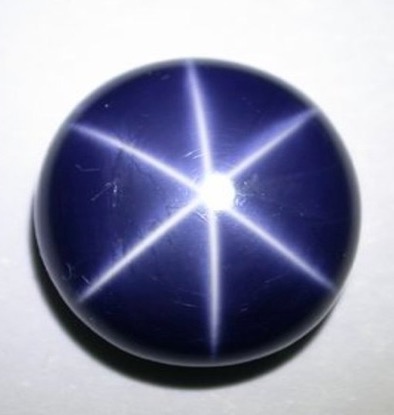
ORIGIN OF THE STAR
The presence of a six-rayed or twelve-rayed star figure on the surface of a starred sapphire or ruby is caused by the scattering of light from oriented needle-like included micro-crystals of the mineral rutile, [Ref 3]. In some gemstones, this same effect is due to oriented needle-like microcrystals of the minerals hematite or ilmenite, [Ref 4].
In describing the orientation of the included crystals, within the crystal, the diagrams of cross sections of the two prism forms, shown in Figure 2, are helpful. The view is down the c-axis of a corundum crystal [Ref 5].
In the diagram below, the faces of the first order prism are labeled “m” and those of the second order prism are labeled “a”. The included rutile crystals form on internal planes, parallel to the “m” faces, and crystals of hematite/ilmenite form on internal planes, parallel to the “a” faces. The six-fold orientation of the rutile crystals around the prism, is shown in the micrograph in Figure 3. The star sapphire was cut with six facets, centered on the c-axis of the crystal, thus exposing the rutile crystals. An enlarged view of rutile crystals is given in Figure 4.
Because of the symmetry of the arrangement of the included rutile, hematite, and ilmenite crystals around the c-axis, the star sapphire or ruby is cut from the crystal so that the star is centered at the apex of the cabochon as shown in Figure 2.
The angle between the face of the first and second order prism is 30 degrees.
The presence of crystals of both rutile and either hematite or ilmenite on faces separated by 30 degrees results in a star with twelve rays separated by 30 degrees as shown in Figure 5.


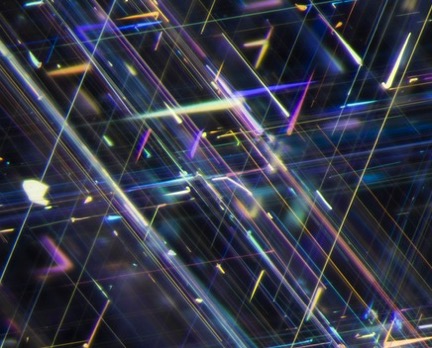
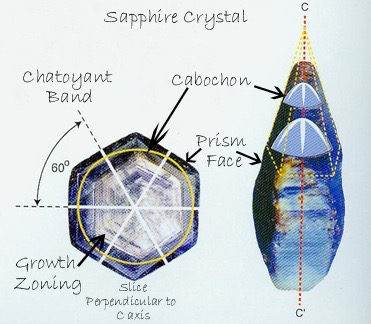
[Ref 9].

How Light Scattering from Needle-like Crystals Creates a Star
A needle-like crystal scatters light incident directed perpendicularly to its length. The crystals diameters are in the micron range as shown in the microscope images in references 11-13 and listed in Table 1. This size range is just larger than the wavelengths of visible light in the 400-700 nm (0.4-0.7micron) range and equations formulated by Mie describe the intensity of the light with forward and reverse scattering angles as shown in Figure 7. It is constructive and destructive interference, between the light waves incident on the boundaries of the needle, that result in the scattering of light, both in the original direction of the light, and in the reverse direction, as shown in Figure 7. It is the light scattered in reverse directions towards the viewer that forms the visible star.
TABLE I: Diameters/Widths of Included Rutile/Hematite Crystals in Sapphire/Ruby
| Reference Number | Figure Number | Size Range |
| 11 | 1A | ~ .5-.7 microns |
| 12 | 11 | ~ .5-1.4 microns |
| 13 | 8 A, B, C | ~ 1-1.5 microns |
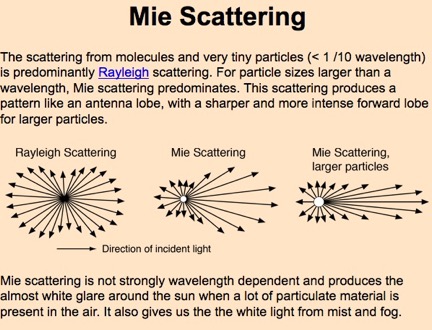
Irregularly Shaped Stars
Two irregularities are lack of uniform intensity along a ray of the star, and a star with a geometrical offset. As opposed to a star with uniform intensity along each ray of the star, as shown by the gem in Figure 1, other star sapphires exhibit irregularities within the rays of the star as shown in the example of Figure 8. The variation in intensities reflect varied densities of crystals along the length of the ray. Varied conditions during crystal growth can affect the concentrations of elements required for the formation of rutile or hematite/ilmenite crystals. With repetitive changes in growth conditions, gaps in a ray can occur, or a region of lesser concentration of crystals with diminished intensity can occur. Often consecutive regions or growth lines with different color or hue can also be seen.
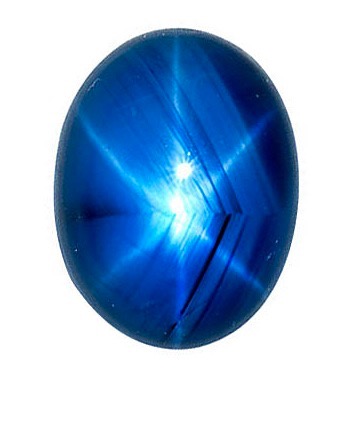
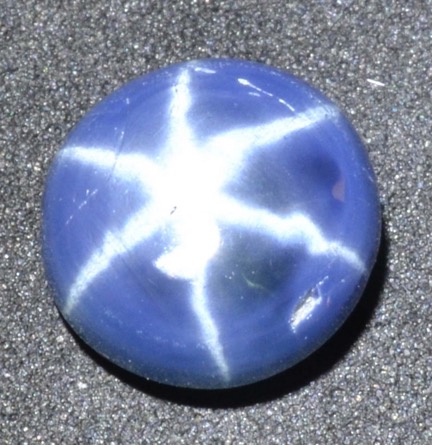
Dual Star Sapphires and Rubies
There are two types of starred sapphires or rubies which exhibit twin stars.
Dual stars from twinning
A blue dual-star sapphire is shown in Figure 10. Two offset six-rayed stars in parallel orientation are present. The two stars on the cabochon result from the reflection from multiply stacked, adjacent microns-thick, regions of the crystal with two adjacent regions being twinned in respect to each other, as shown in Figure 11. The orientation of the rutile crystals in each member of a twin are different; according light scattering results in the formation of two stars on the surface of the crystal, as shown in Figure 12.
(The star sapphire shown in Figure 10 displays irregularities in the shapes of the rays in the form of “jogs”. These arise from local regions in which the crystal lattices have different orientations from one another).

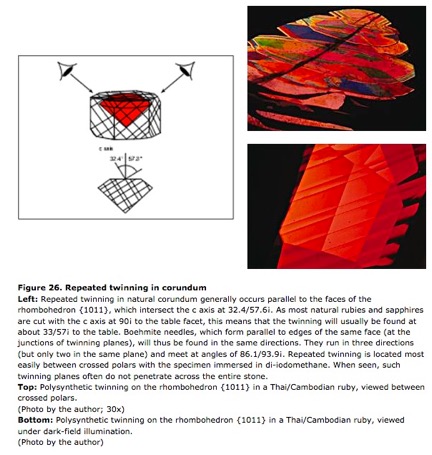
Dual-Color stars
The dual-color, starred gemstone, presents the images of two stars, identical in shape, with one white and the other the color of the gemstone. Typically, the gemstone is transparent. When the gemstone is viewed obliquely the rays of the two stars are offset with rays parallel on the surface of the gemstone, as shown in Figure 12. With a decreasing viewing angle, the offset decreases. When the gem is viewed perpendicular to its center, the two stars are superimposed. This behavior indicates the colored star to be the reflection of the white star from the back surface of the gemstone, with the reflected image picking up the color of the gemstone.
Figure 6. Purplish pink sapphire from Myanmar in a view to the curved dome (d) (left column) and the curved base (b) of the cabochon (right column). In the top row, the white arrow indicates the direction of light, and the eye symbolizes the observer receiving the reflected light. In both orientations, the body colored six-rayed star is focused within the cabochon (middle row), and the white star is focused slightly outside the stone, between surface and observer (bottom row). The sample measures 7.0 mm in diameter, with a thickness of 3.5 mm, and weighs 1.62 ct Photos by K. Schmetzer.
Gallery of Star Sapphires and Rubies
For this gallery, I’ve chosen gems which held special appeal to me. I hope you find them beautiful as well.
